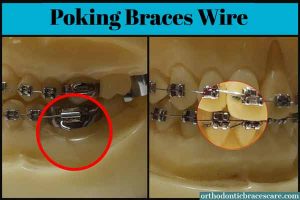

Over time, your retainer's alignment can change if you cannot return to your orthodontist for retainer checks and adjustments.

If your permanent bottom retainer is loose, your orthodontist may need to replace and reapply it. Bonded or permanent retainers may also cause tooth movement with everyday use and the glue or wires can break down. Other signs of an ill-fitting retainer are a poking wire or plastic which cuts your mouth or an overly tight or painful fit. If your retainer doesn't fit on one side of your mouth or feels so tight you have to wedge it into your mouth, your orthodontist may need to replace or adjust it to prevent your teeth from shifting back into their original positions. A Hawley retainer's clasps may loosen through everyday use, and a clear plastic retainer may relax. Too Loose or TightĪ retainer that doesn't fit properly is something many wearers struggle with. Here are some common problems which can arise regarding the condition of your retainers. It is best to contact your orthodontist and schedule an appointment so they can adjust your retainer to fit your teeth better. Trying to force your retainer to fit around your teeth after they have shifted can damage both your teeth and your retainer.

Only wear your retainer if it fits comfortably. To test if your retainer still fits, you can place it gently in your mouth and see if it slips into place. If your retainer fits correctly, it will feel somewhat snug and gradually loosen up to eliminate any discomfort. If it doesn't fit easily, make an appointment with your orthodontist to ask for help.
Braces wire shifted to one side how to#
How to Know if Your Retainer Doesn't Fit Anymore Wearing your retainer as instructed can help you avoid more significant dental complications and loss of time and money. Forgoing your retainer for extended periods can cause crooked teeth and become more difficult for your orthodontist to adjust. When your teeth shift, it can affect your bite, your alignment and how your retainer fits in your mouth. If you don't wear your removable retainer consistently, your teeth will gradually move back to their original positions. Let's dive into the most common issues people face with their retainers and how to remedy them! What Happens if You Don't Wear Your Retainer? However, you may have encountered some obstacles when it comes to daily retainer maintenance. Since there are many different types of retainers, you have flexibility in whatever option you and your orthodontist choose. A properly fitted retainer will solidify the alignment results of your braces. Once you've had braces, you probably know that a retainer is an essential part of your orthodontic care.


 0 kommentar(er)
0 kommentar(er)
